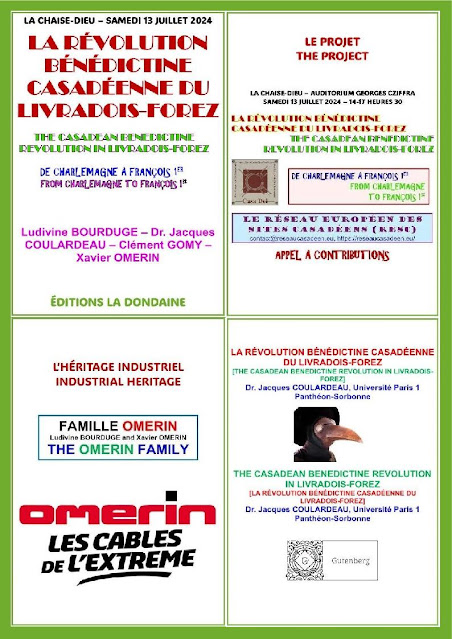Wednesday, August 07, 2024
Europe After Roman Slavery, A Slow Renaissance
14
CENTURIES OF THE BENEDICTINE REVOLUTION
https://jacquescoulardeau.medium.com/14-centuries-of-the-benedictine-revolution-897e9e92847e
The
social transformation and proto-industrialization of the Carolingian times in
Europe was a deep revolution with hemp used for braiding and weaving performed
with hydraulic power, not to mention the agriculture boosted by drainage, and
irrigation. Education was central at all levels, and slavery was definitely
eliminated from Europe. Despite the great challenges of the time, it was a
great period for the arts, music, education, and demography. The last element
was so good that it became a problem: overpopulation. The Black Death solved
the problem with a 50% death rate in just ten years.
The
Carolingian Reform or Renaissance of Charlemagne – Damn’d Sacred Charlemagne –
crowned on December 25, 800 by a Pope whom he saved from an impeachment trial
with the penalty to supremize the Carolingian Empire – this Carolingian
Renaissance or Reform, managed, controlled, and directed by the Benedictines,
we are still relying on, the 52 Sundays and a few festivals such as Christmas
(the orgy of chocolate), Easter (the hunt for hare and rabbit eggs) and the
Assumption (which became the Blueberry Festival at Col du Béal, Auvergne,
France). It is not a question of re-establishing the celebrations of the
Nativity, the Passion, and the Assumption of the Virgin Mary, but of
understanding the passage from the slave society before the Carolingians (you
know Charles Martel and Poitiers or Tours in 732 was their starting point) to
the feudal society which for our Livradois Forez introduced an unprecedented
green revolution, water management in drainage and irrigation without any
equivalent except in Babylon a long time ago BCE, and India and Sri Lanka a few
centuries AD.
What’s more, this revolution is still here in Livradois-Forez with the braiding industry, of long ago, which gave birth to the core-spun thread industry that has become essential in the textile industry, especially for working clothes. The braiding loom has not changed much over the centuries, except with bigger, at times, braiding looms that have become more versatile for the various threads they braid around the core which can be any material from polyester to plain metal. The number-one world and global brand name in this field of cables is Omerin in Ambert, Livradois-Forez, France, the direct descendants of Saint Robert de Turlande in La Chaise-Dieu.
Enjoy the history of how the Middle Ages
produced the basic research and implementation of an essential industry in the modern
world for security, high tech, and all sorts of communication, WIFI, cordless,
or with shielded cables, including 5G and soon coming 6G. There is NO
GENERATIVE ARTIFICIAL INTELLIGENCE
without these cables that started to be produced sometime in the 10th
century.
La Révolution Bénédictine Casadéenne du Livradois-Forez: De Charlemagne à
François 1er
The Casadean Benedictine Revolution in Livradois-Forez
Jacques COULARDEAU (Auteur), Clément Gomy (Auteur),
Ludivine Bourduge (Autrice), Xavier Omerin (Auteur)
Éditions La Dondaine, Medium.com, 2024
History, * Education, * Green
Revolution, * Charlemagne, * Middle
Ages






